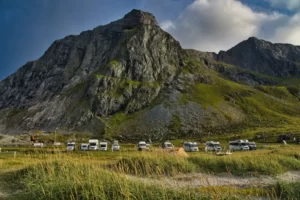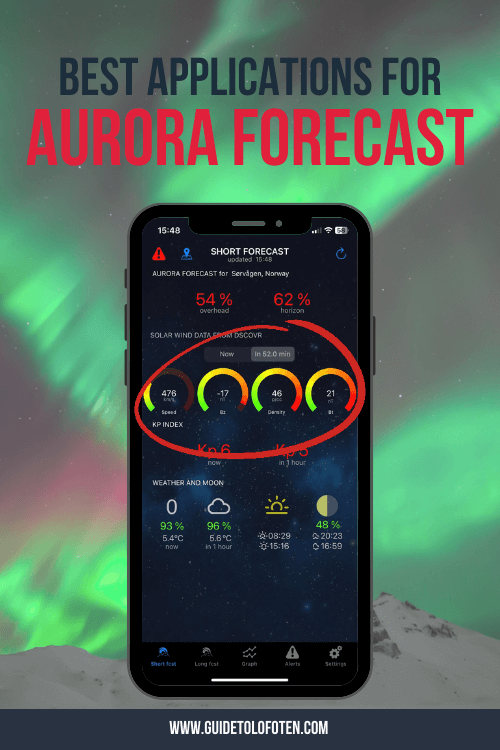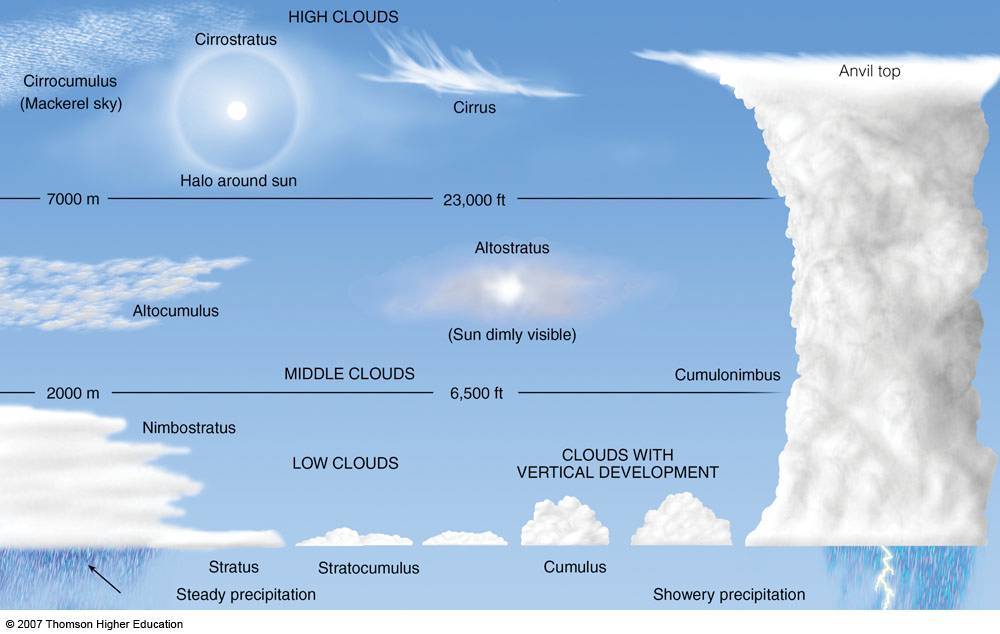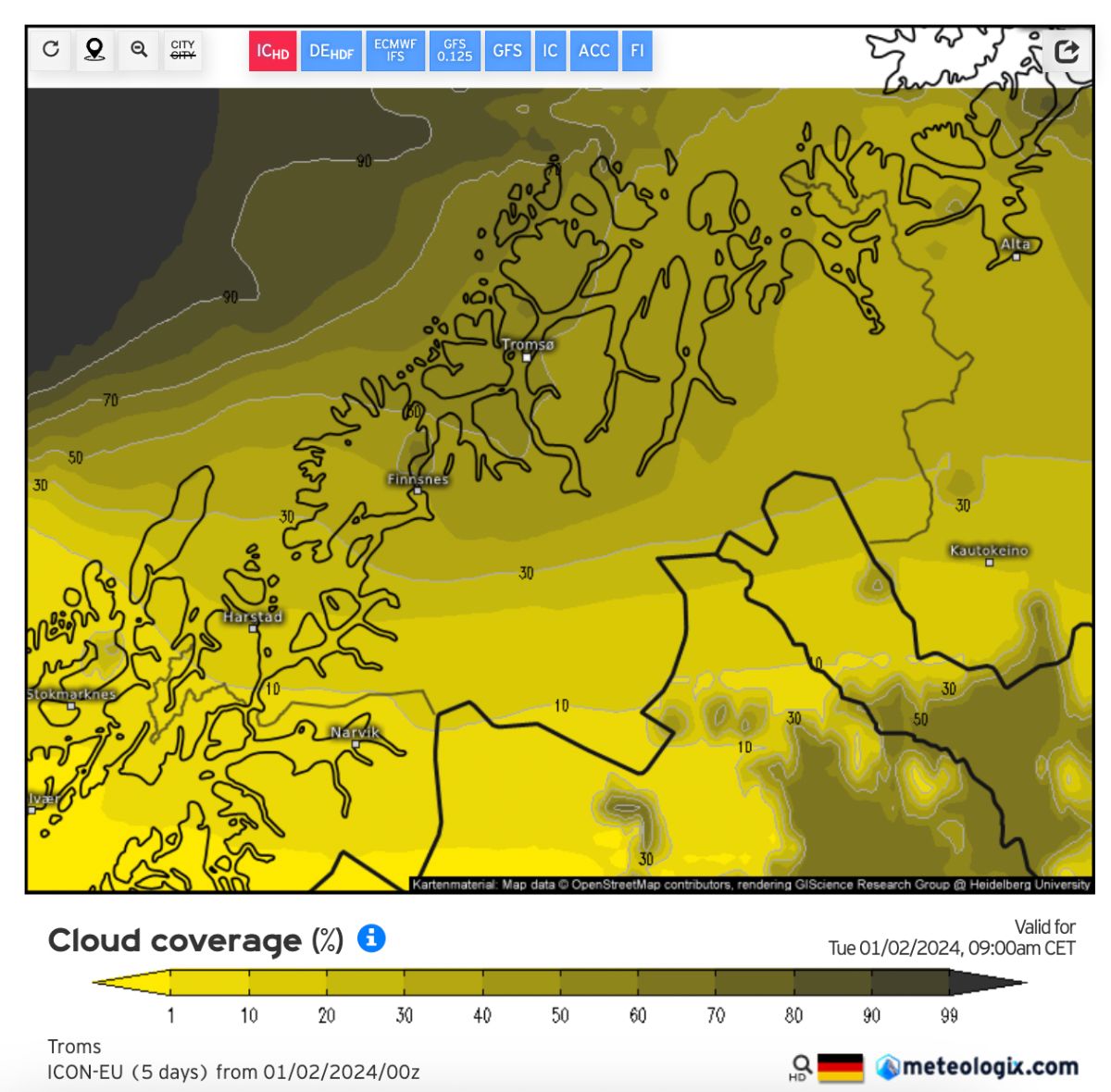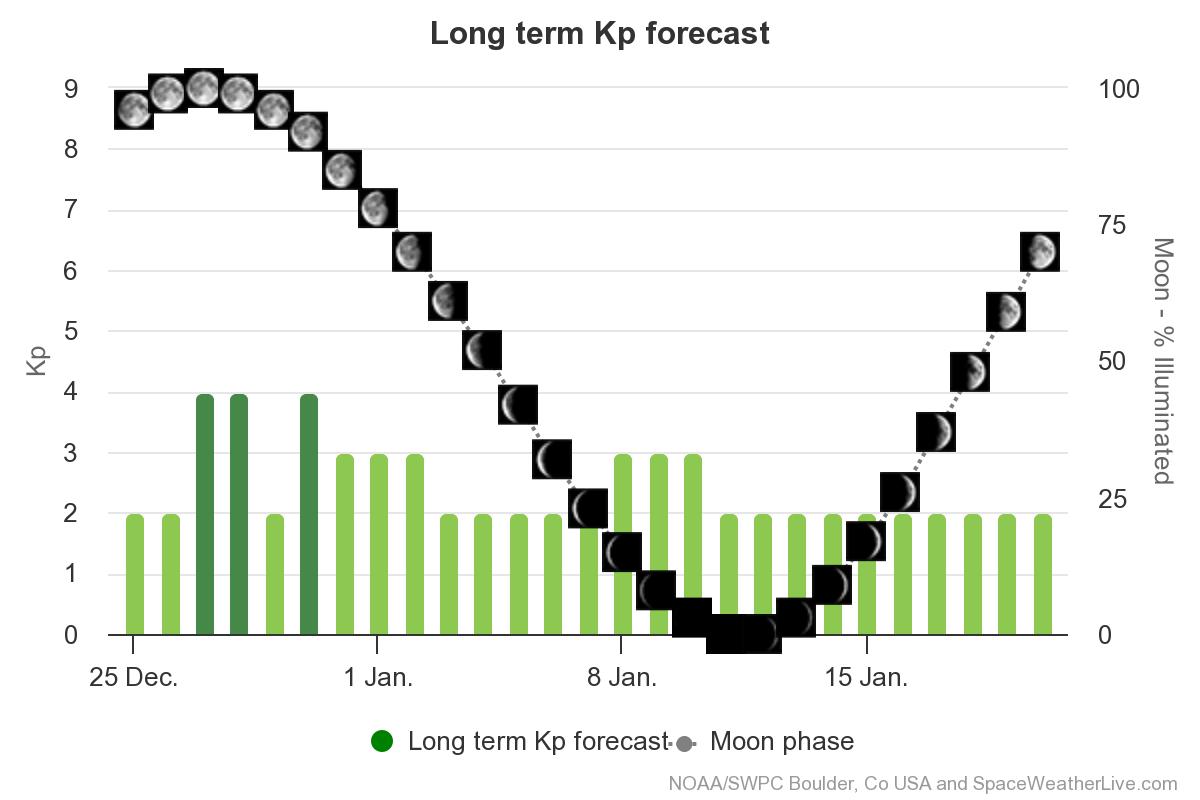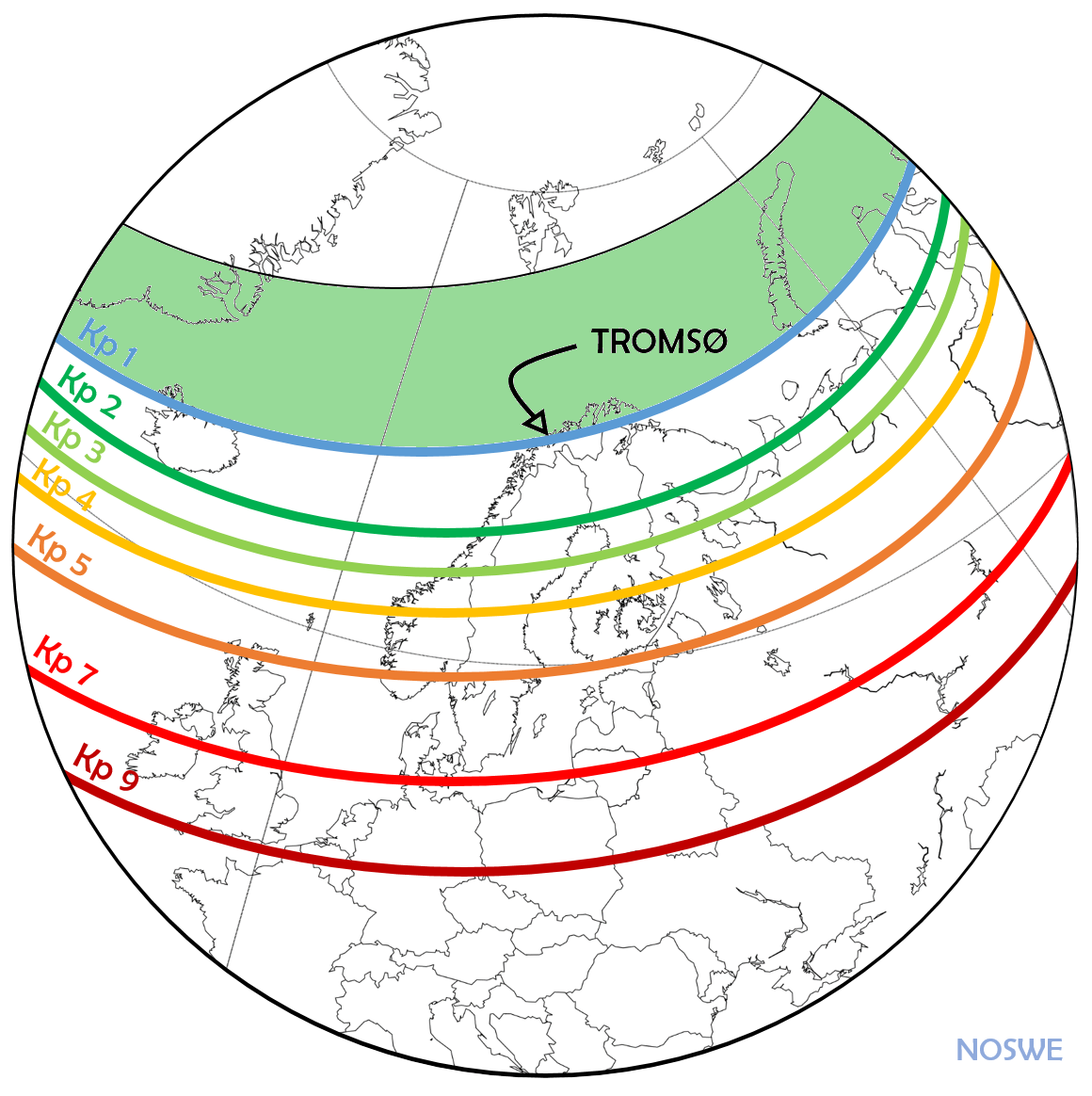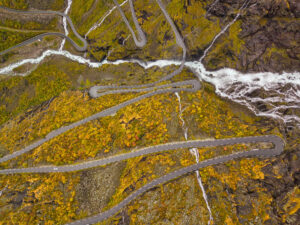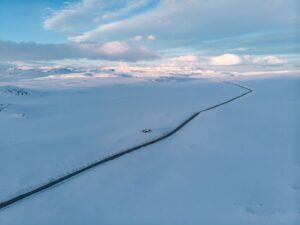What are the interplanetary magnetic field (IMF) and Bz?
The interplanetary magnetic field (IMF) is a magnetic field that extends through interplanetary space. It is carried by the solar wind, and it interacts with the magnetic fields of planets, including Earth. This interaction can cause geomagnetic disturbances and trigger the northern lights.
In Northern Lights forecasting, “Bz” refers to the vertical component of the interplanetary magnetic field (IMF). Since space is 3-dimensional, there’s also a Bx and By value, but these two do not influence aurora activity.
The Bz value plays a crucial role in determining the likelihood and intensity of the northern lights, and it is a much more important parameter than the Kp index.
What Do The Bz Values Mean?
Negative Bz: When Bz is negative, it’s like the compass pointing towards the North Pole, meaning that most solar wind particles will come crashing into Earth’s atmosphere near the North Pole.
Positive Bz: Conversely, when Bz is positive, it’s like the compass pointing towards the South Pole, meaning that the solar wind particles will mostly hit near the South Pole.
Bz Value of 0: A Bz value of 0 means the compass is lying flat, parallel to Earth’s magnetic field. In this case, solar wind will sneak into our magnetosphere from both sides, creating auroras in the North and South Poles.
So, the orientation of the interplanetary magnetic field (Bz) influences which pole (North or South) experiences the most intense auroral activity.
In the northern hemisphere, you generally want a negative Bz for a higher chance of seeing the Northern Lights. Conversely, in the southern hemisphere, you would prefer a positive Bz for a better chance of witnessing the Southern Lights (Aurora Australis).
Can You See Aurora Borealis In Norway When Bz Is Positive?
Yes, you can. Although an Aurora in the north can happen with a positive Bz, a negative Bz is generally better. A negative Bz helps the solar wind grab the Earth’s magnetic field, which can lead to an Aurora more easily. So, a negative Bz is good. The more negative, the better.
What are the best Aurora Tracking Apps in Norway?
Now that you know checking the weather forecast is the first thing you should always do when attempting to watch the Northern Lights and that you should monitor the Bz value rather than the Kp index, let’s answer the question about the best apps for the Northern Lights in Norway. After all, that’s why you’re reading this article, right?
There are many aurora tracking apps available, some paid and some free, with varying levels of popularity. The ones I see people use the most are Norway Lights, My Aurora Forecast & Alerts, and Aurora Alerts.
However, this doesn’t necessarily mean they are the best. Let me quickly go through them.
Norway Lights: the worst app for Aurora Alerts
I often see people using this Northern Lights app and wonder why they downloaded it and didn’t delete it immediately.
This app was created by the Visit Norway site. I suppose they wanted to create an “Aurora Borealis predictor” that would give a simple answer to the question: “Is it possible to see the northern lights tonight?”
The app displays larger towns above the Arctic Circle and a call to action to try, wait, or go.
However, what it shows is too simplistic and doesn’t help to predict northern lights in any meaningful way.
It lacks detailed parameters and feels more like a commercial tool for promoting hotels and tour information than a reliable aurora forecasting tool.
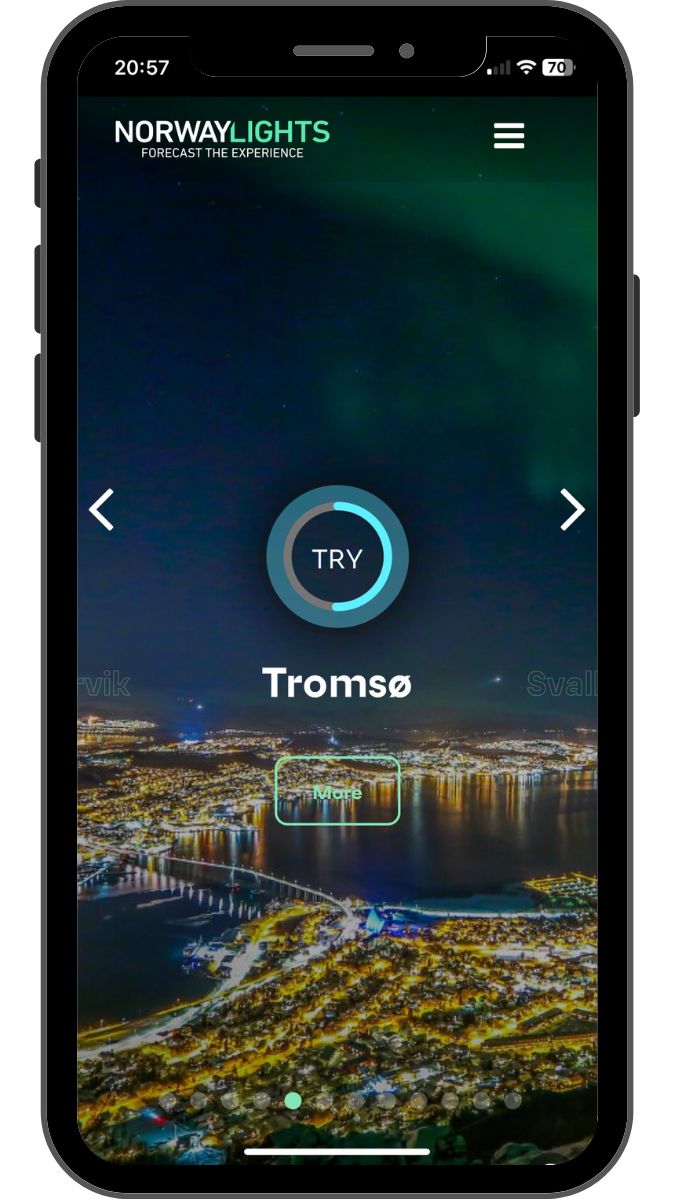

My Aurora Forecast & Alerts: The most popular Northern Lights App
My Aurora Forecast & Alerts seems to be the most commonly used app among tourists traveling to Lofoten or Tromsø. However, I am not a big fan.
People in Tromsø or Lofoten who use this aurora app often get excited when it indicates a high Kp index or disappointed when it’s low. However, as I explained earlier, the Kp index does not matter much in high latitudes. You can witness impressive displays with a Kp=0-1 and see nothing with Kp=6.
It’s important to monitor other parameters than just the Kp index, like the Bz value, and this aurora tracker focuses too much on the Kp index.
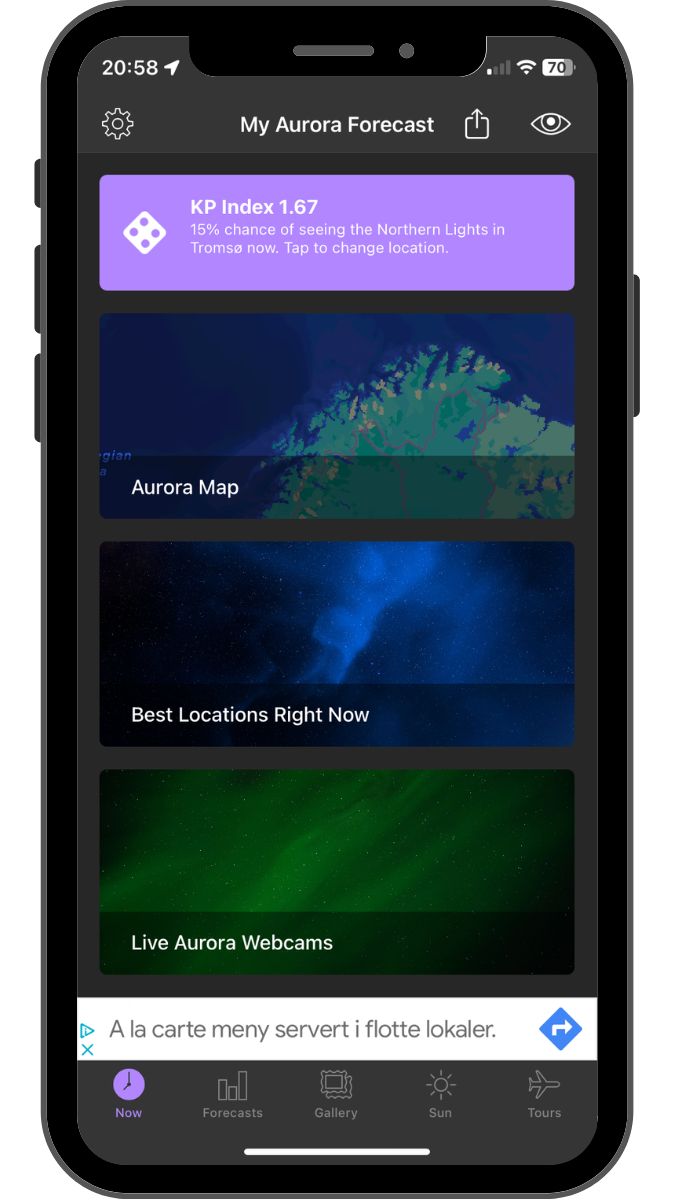

The app displays graphs with solar wind speed, density, and Bz. However, these graphs are hidden and challenging to interpret.
It’s great that it shows live aurora webcams so that you can see real-time auroras worldwide. However, that might be the only function (along with the high-resolution sun imagery) not available in other apps, and I wonder if it’s worth downloading this app just for that.
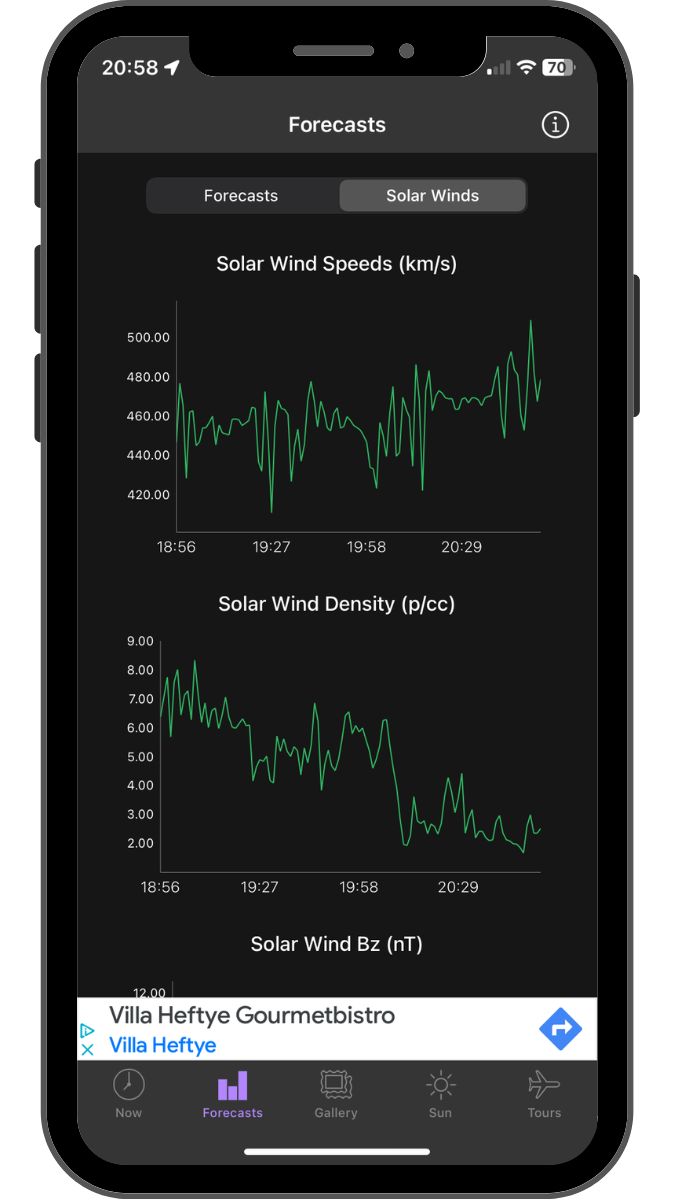
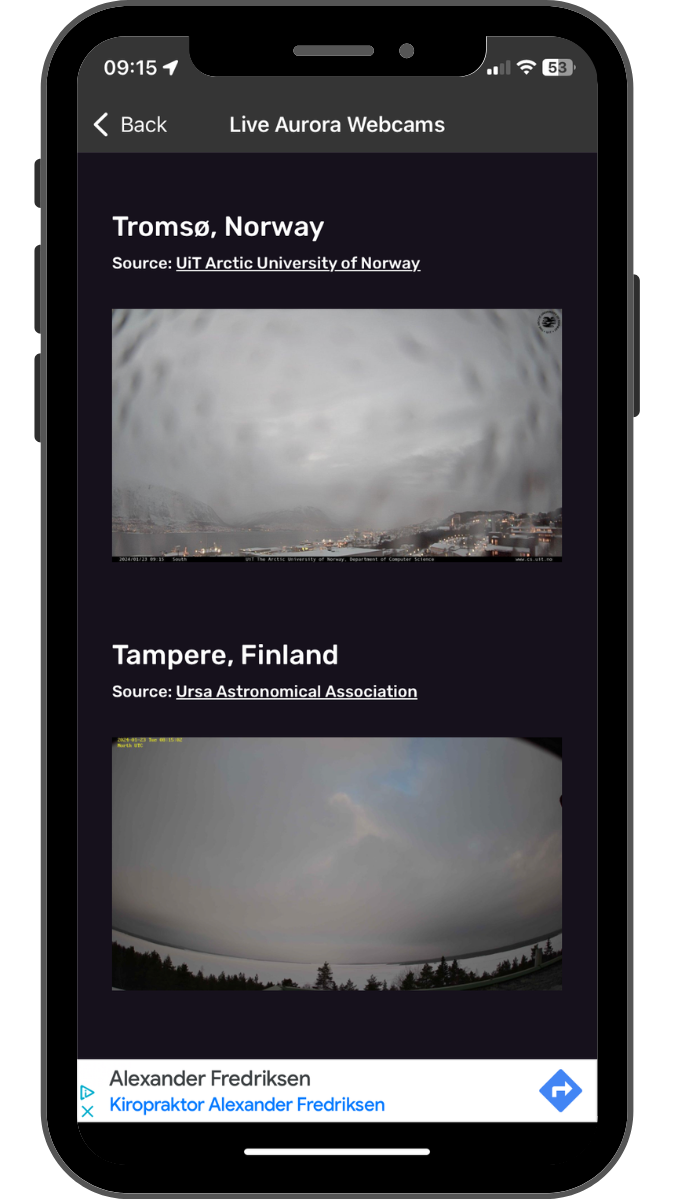
Aurora Alerts: Perfect App for Aurora Tracking
Aurora Alerts is my favorite northern lights forecast app. The user-friendly interface on both iOS and Android platforms makes accessing and understanding essential data easy.
The main screen provides real-time information from the DSCOVR satellite, displaying solar wind speed, IMF orientation (Bz), solar wind density, and the strength of the magnetic field (Bt).
What sets this aurora tracker apart is its intuitive color-coded system. As these values increase, they transition from green to yellow and orange, ultimately turning red for exceptionally high levels.
This visual display makes it easy for beginners to quickly understand the chances of seeing the Northern Lights. It’s much simpler than trying to read graphs or complex data.
You also have an option to unlock alert services for a small fee. As I mentioned several times, you do not care about the current Kp index in Tromso and Lofoten. Instead, I recommend signing up for solar wind alerts and getting a notification when the Bz turns negative.
Note: In the Apple App Store, they call the app “Northern Light Aurora Forecast,” In the Google Play Store, you will find it under “Aurora Alerts – Northern Lights Forecast.”
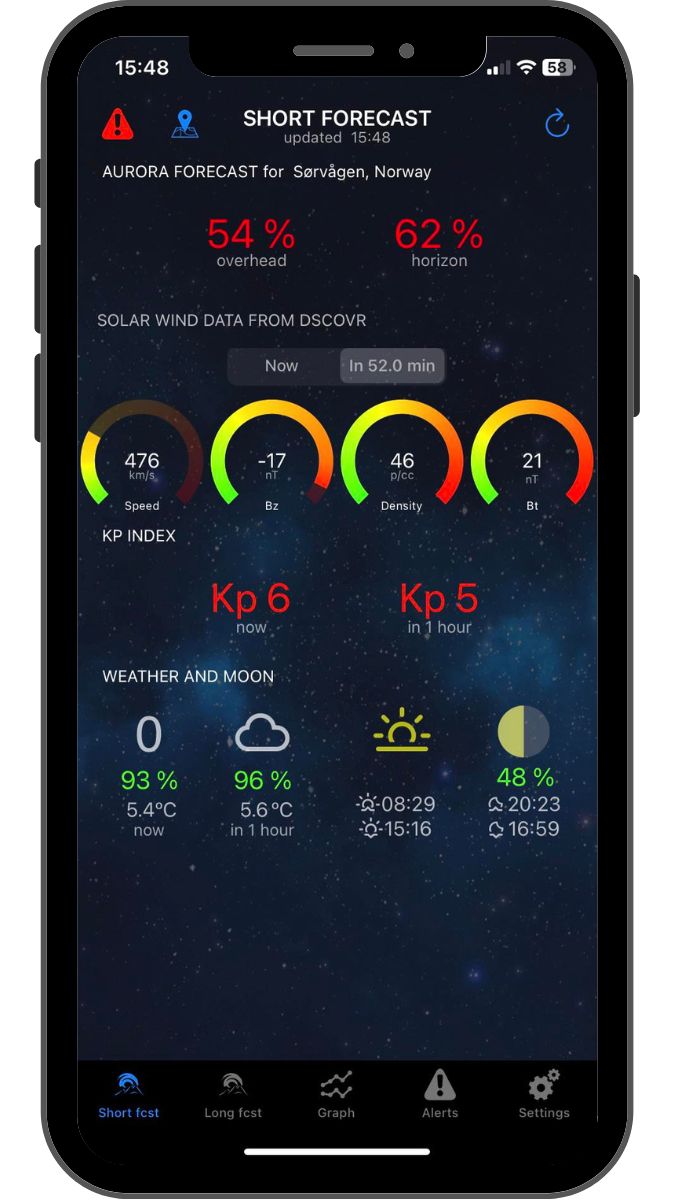

Hello Aurora: Great Aurora Tracking App With Handy Map Feature
I haven’t known about the Hello Aurora app for long, but it quickly became my favorite. This app appears much simpler and easier to use than others, avoiding an overload of scientific details.
It was created by Icelandic inventors, but it works fine for Norway as well.
On the main screen, you have the same data as in the Aurora Alerts app, although it’s presented in a slightly less user-friendly way.
I really appreciate the map function, which integrates a cloud cover forecast. You can also upload your pictures to the app and notify other users about your aurora sightings at that location and time, which I think is super cool. This way, you can see someone nearby captured an amazing aurora just 30 minutes or an hour ago.
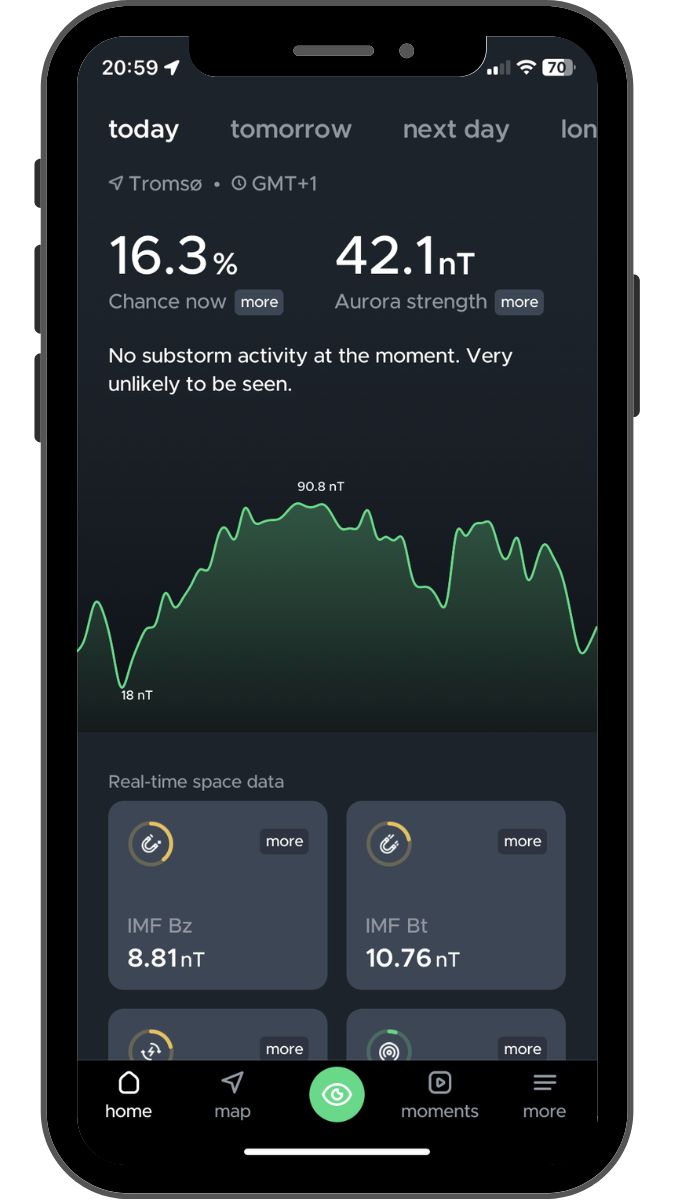
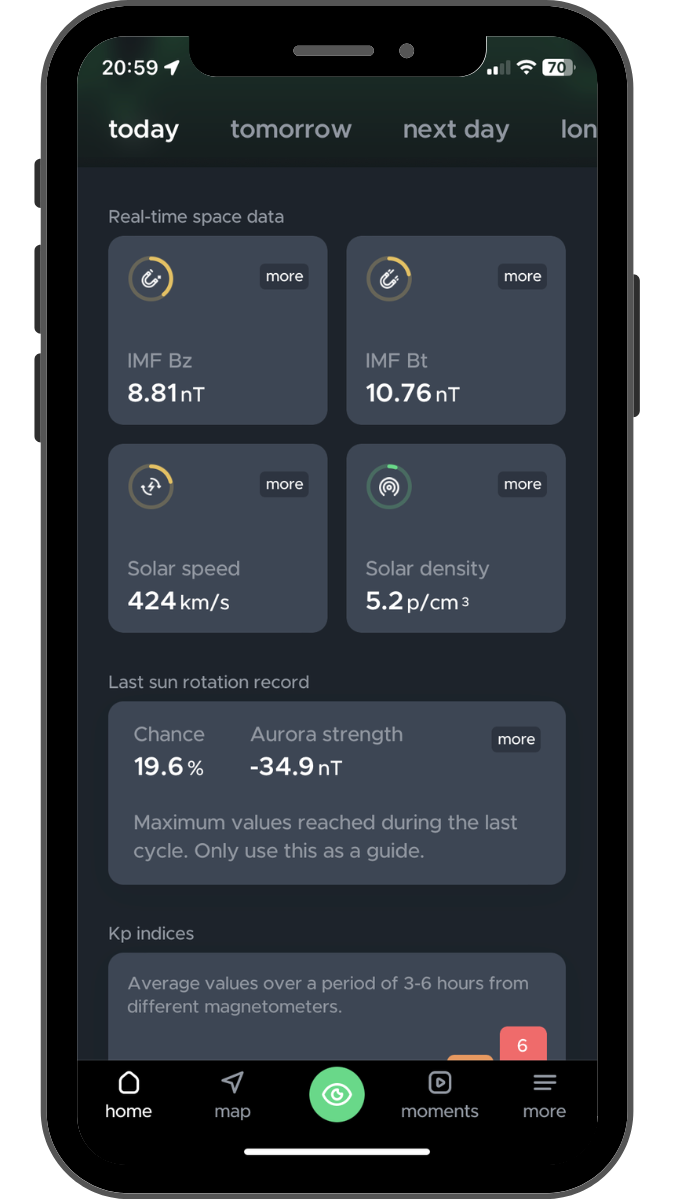
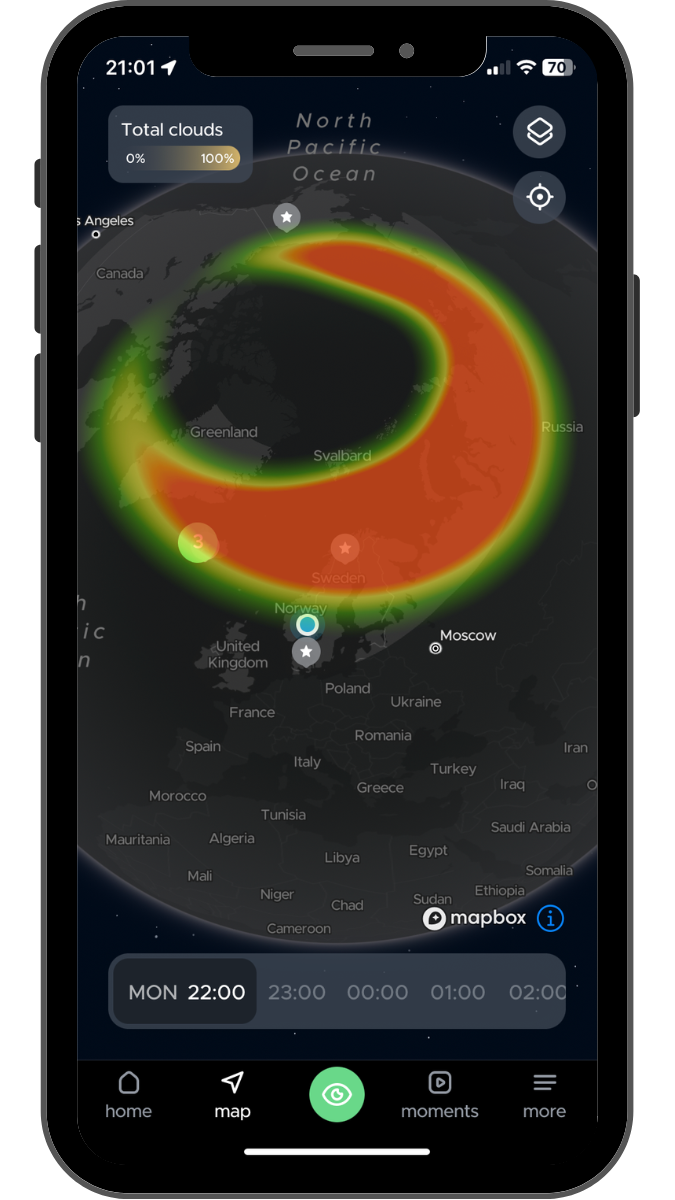
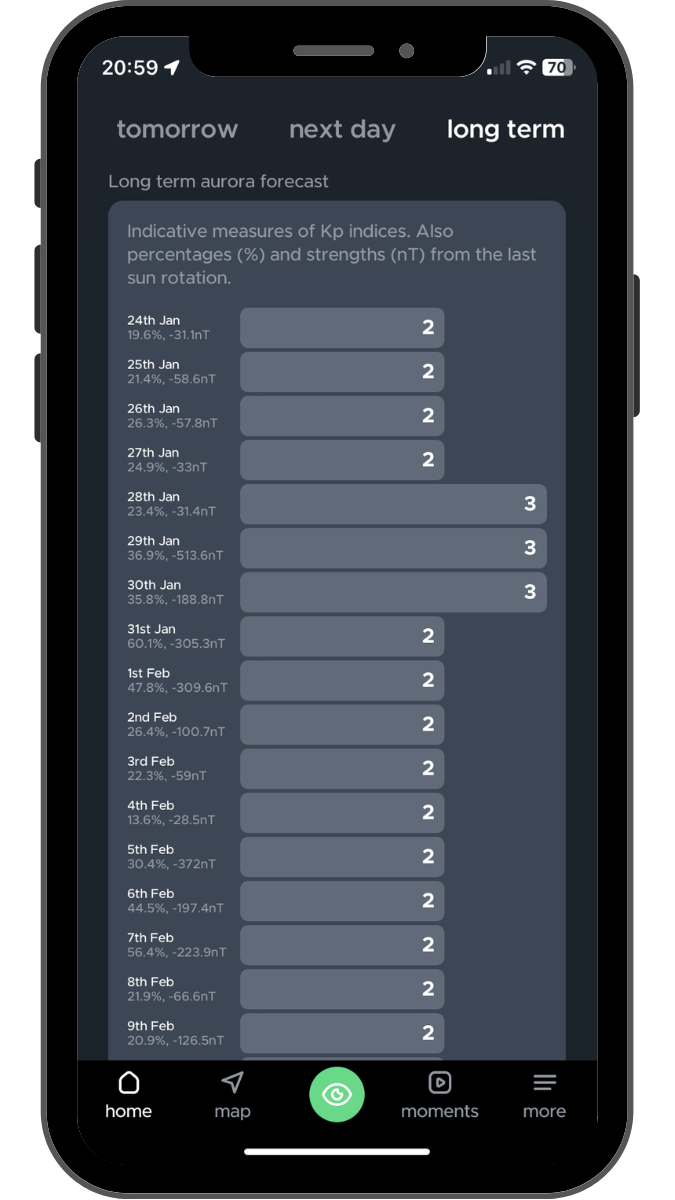
Best websites for Northern Lights forecast
SpaceWeatherLive.com
If you want to learn about space weather or prefer websites over the aurora tracking apps, check out SpaceWeatherLive.com.
This site displays space weather conditions, such as coronal holes facing Earth and solar flares that can trigger the Northern Lights.
You can access real-time data on both solar and auroral activity.
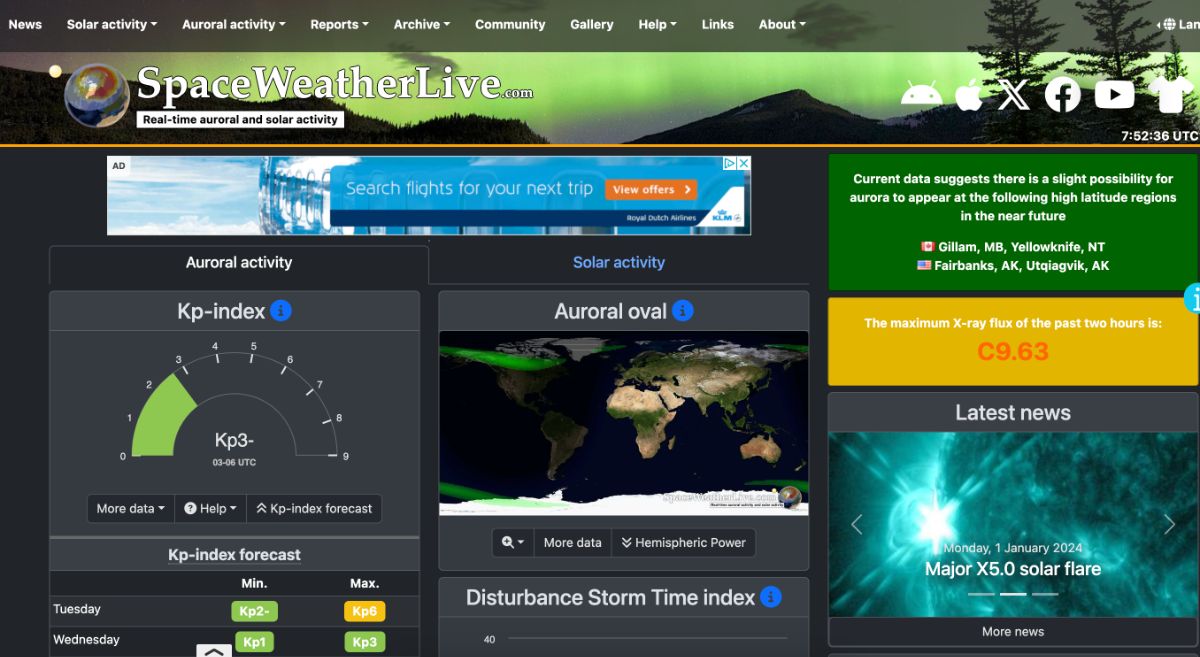
Aurora tracking tools and SpaceWeatherLive.com
NOAA / NWS Space Weather Prediction Center
NOAA is a page similar to SpaceWeatherLive.com, but it is just much less user-friendly.
Many aurora enthusiasts use these two sites for SWPC ovation aurora forecast, where they are checking the Hemispheric Power Index (HPI).
The OVATION model estimates the total energy deposited in the Earth’s atmosphere in gigawatts, projecting up to 30 minutes into the future.
Generally, auroras may not be visible when the HPI is below 20GW. Between 20 and 50GW, auroras might be visible closer to the poles. Above 50GW, auroras become more visible with significant activity. An HPI above 100 indicates a major geomagnetic storm.
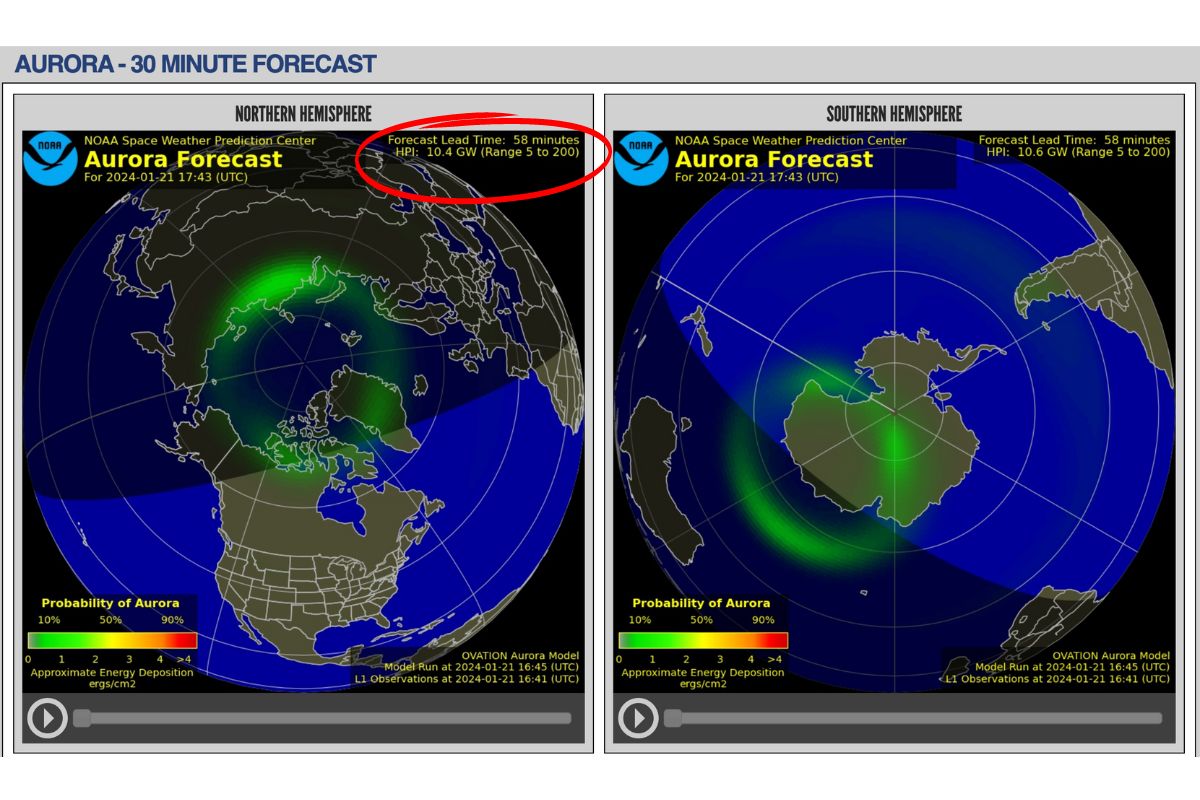
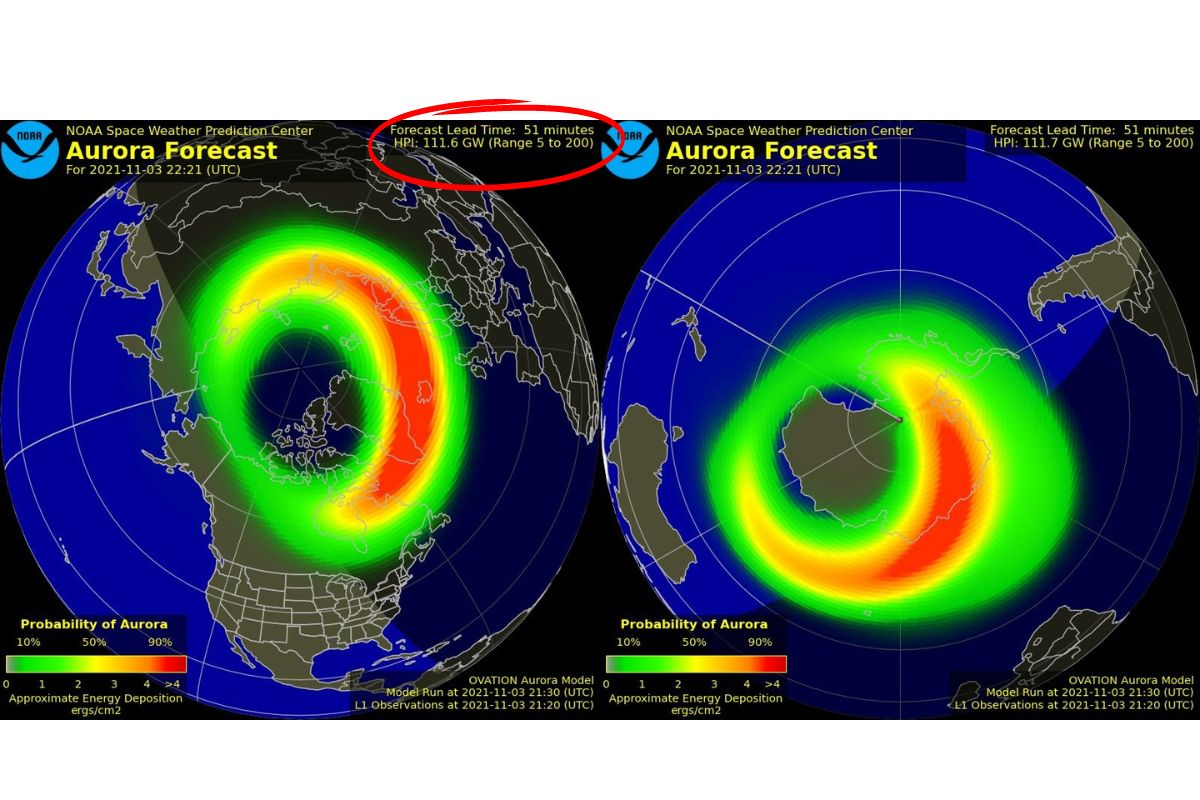
Facebook Groups and Pages
Facebook is not a Northern Lights tracking app, but it is one of the most helpful ways to be notified of Northern Lights’ activity. We run two Aurora Alerts Groups – one focused on Lofoten and one on Tromsø.
These groups are for alerts only, so you can turn on post notifications and get alerted when somebody posts an aurora picture. If you want to post your sightings, please always include the date, time, and approximate location.
In addition to the Facebook groups, we like to follow FB pages about Space Weather that alert us about sunspots, coronal mass ejections, or solar flares in advance. Among our favorite ones are Space Weather by SolarHam and SpaceWeatherLive.
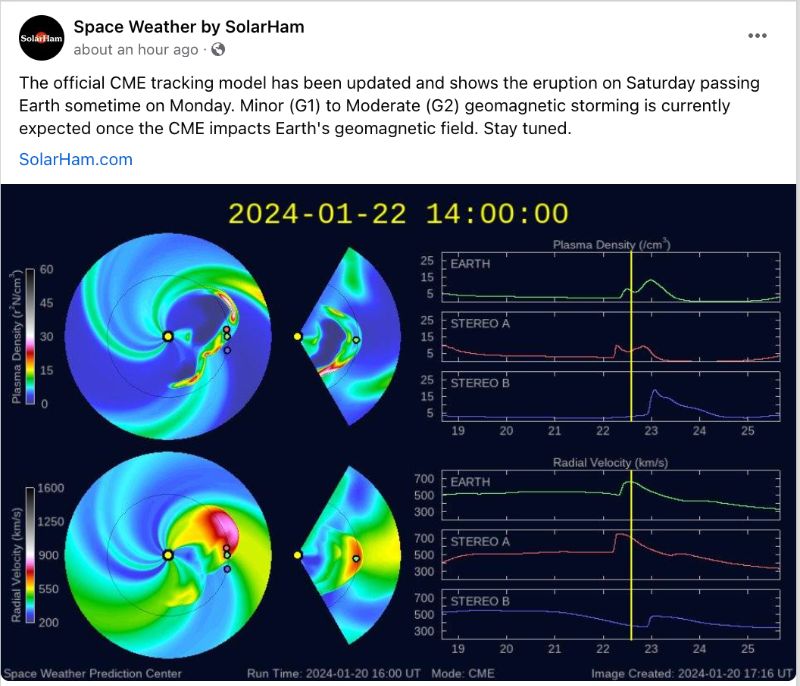
Summary: Understanding the Northern Lights forecast
I know this article was quite long and filled with technical details. However, understanding the Northern Lights is challenging, and I’ve only just scratched the surface of their science.
If there’s one thing to take away from this article, it’s that forecasting the Northern Lights is similar to forecasting the weather in northern Norway. All data might suggest that it will rain, but in the end, it doesn’t.
It’s the same with the Northern Lights – the data might suggest the aurora will be visible tonight, but they don’t specify exactly where, when, how strong, or what shapes or colors will appear.
The best action is to dress appropriately, head out, patiently wait for them to appear, and be grateful when they do.
However, if you want to increase your chances of seeing the Northern Lights, you can either join a guided tour or use the above-mentioned aurora tracking apps to make an informed decision about chasing the northern lights.

When chasing the northern lights independently, it is important to choose a suitable location with a photogenic view. We put our favorite locations around Tromso in this interactive map.
Weather and Aurora Forecast: CheckList
I assume that you are already in northern Norway, somewhere around Tromsø or Lofoten, and that you are contemplating whether you should go out of your warm, cozy cabin or hotel.
Well, let’s put aside the idea that the best thing would be to stay in one of those fancy Northern Lights igloos with a glass roof.
Here is what I would advise you to do:
✅ Check the weather forecast. Look at the percentage of low and middle clouds. If it is a cloudless night, get ready to go out.
✅ If the weather forecast predicts close to 100% cloud cover in your location, scout for an area with fewer clouds.
✅Keep an eye on your Northern Lights alert app (Aurora Alerts or Hello Aurora are the best mobile apps, in my opinion).
✅Forget about the Kp index.
✅ Keep an eye on the Bz getting close to 0 or, ideally, negative.
✅ If the Bz turns negative and other parameters increase as well, then BINGO, you have about 30 minutes until something SHOULD happen.
✅ Most importantly, be patient and look at the sky more than the aurora tracking apps.
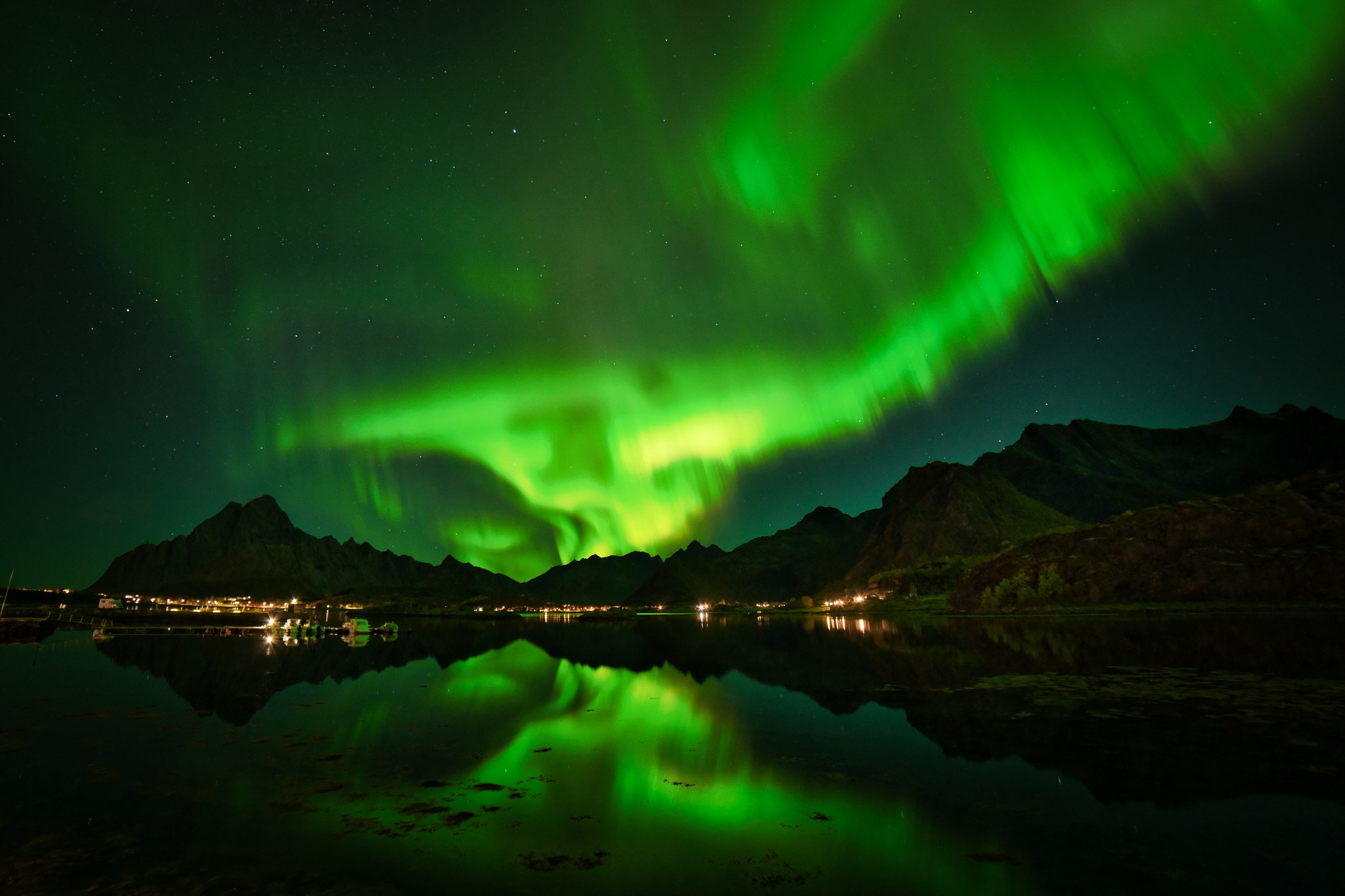
Guided Aurora Chasing in Tromsø
In 2005, five companies sold Northern Lights products in Tromsø. Nowadays, there are more than 100 tour providers have northern lights tours in their portfolio, which does make it challenging to choose the best northern lights tour.
However, there are few significant differences between northern light tours from different providers. For example, they all operate with the same weather and aurora forecast, and the guides from other companies share information with each. Therefore, the success between companies might be less than you think.
We believe that there is no “one-size-fits-all” tour that is best for everybody; that’s why we discuss various aspects such as group size, price, type of vehicle, etc in the article on how to choose the best northern lights tour in Tromso.
👉 Did you leave booking an aurora hunting tour to the last minute? Check what is currently available in Tromsø.
Guided Aurora Chasing in Lofoten
Lofoten is a spectacular location for watching and photographing the Northern Lights. However, unlike Tromsø, where over 100 companies offer Northern Lights tours, options in Lofoten are more limited. Only a few local companies provide tours using vans and minibuses, with the majority based in Svolvær.
We can recommend Lofoten Lights or Svinøya Rorbuer, both based in Svolvær.
👉 Read more about chasing the northern lights in the Lofoten Islands.
Thank you for taking the time to read through our article about the best aurora tracking apps.
If you found our guide helpful, we would be grateful if you could share it with fellow travelers.
Best regards from Lofoten, Radka and Ivar ❤️
PS: If you still have any questions about the Northern Lights, feel free to ask us in the comments. We’re here to help and happy to provide answers.
